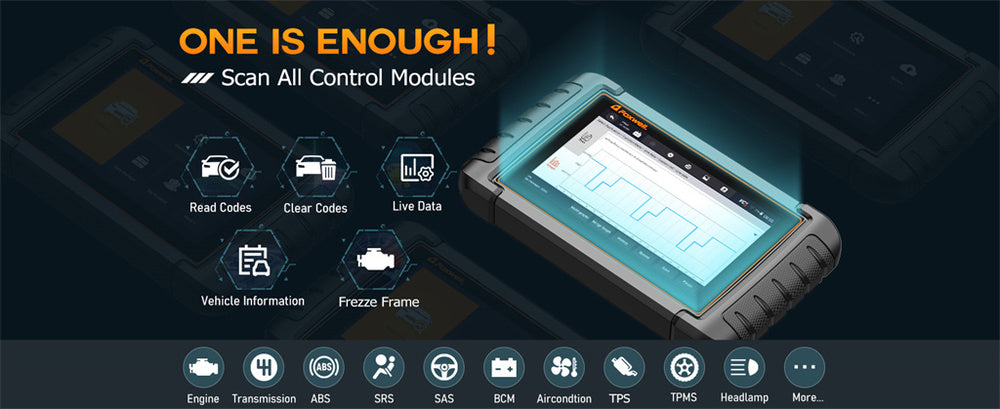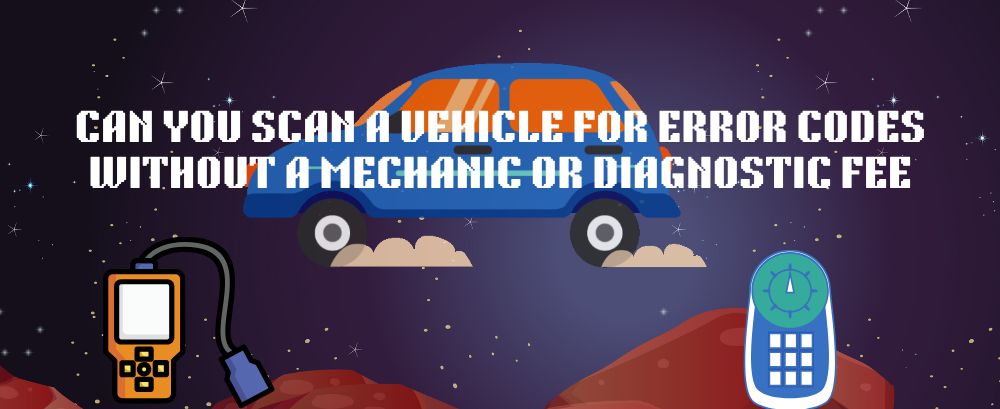If you’ve ever disconnected your vehicle’s Engine Control Unit and then tried using an OBD2 scanner, you may have been surprised to see the scanner still powering on and displaying certain data.
This situation might lead you to wonder:
- How does the OBD2 scanner operate without the ECU?
- Can it still retrieve fault codes or access any meaningful information?
- And most importantly, is the data from the scanner still accurate or useful without the ECU?
This article aims to clarify these questions.
We'll dive into how the OBD2 system and ECU work together, what happens when the ECU is disconnected, and which OBD2 functions remain active without the ECU (and which do not).
By the end, you’ll have a clearer understanding of what your OBD2 scanner can actually do in this setup—and whether it’s still providing useful diagnostic data.
OBD2 and ECU Basics: Their Roles in Your Vehicle

The OBD2 system and the ECU are two critical components in modern vehicles.
The ECU, often called the "brain" of the engine, manages key engine functions, such as fuel injection, air intake, and ignition timing, to optimize performance.
The OBD2 system, on the other hand, functions as a diagnostic gateway, providing access to the information and fault codes stored by the ECU. This system is essential for identifying issues, troubleshooting, and monitoring vehicle health.
Looking for a reliable OBD2 scanner? The Foxwell NT716 OBD2 Scanner is a top choice. Designed with advanced technology, it seamlessly reads and analyzes ECU data for precise, efficient diagnostics.
Supporting both OBD2 and CAN (Controller Area Network) protocols, the NT716 provides full-system diagnostics for a range of vehicles, covering engine performance to ABS and airbag diagnostics.
Its user-friendly interface gives you access to live data and real-time monitoring and even clears trouble codes easily.
The NT716’s “One-Key Auto-Scan” feature also simplifies the process, speeding up troubleshooting.
How OBD2 and ECU Communicate: The Data Exchange Process
The OBD2 scanner relies on data that comes from the ECU to function.
The ECU gathers data from various sensors in the vehicle, processes this information, and sends relevant data to the OBD2 system through a communication network—usually the Controller Area Network (CAN bus).
When you plug an OBD2 scanner into the vehicle's diagnostic port, it connects with the ECU, allowing it to retrieve diagnostic codes, sensor data, and other critical information for troubleshooting.
Why Your OBD2 Scanner Still Works After Disconnecting the ECU
If you've disconnected the ECU and your OBD2 scanner still powers on, this might seem puzzling.
However, in most vehicles, the OBD2 port remains powered even when the ECU is disconnected. The OBD2 scanner can therefore power on and communicate with any available modules on the vehicle’s diagnostic network, though its functionality will be limited without the ECU as a primary data source.
In some cases, the scanner might still display codes or data stored or "cached" by the system before the ECU was disconnected.
Data Storage and Reading Mechanisms of OBD2 Without the ECU
OBD2 systems are often designed to temporarily store certain types of data.
If the ECU is disconnected, the OBD2 scanner might still access stored fault codes, pending codes, or freeze-frame data logged before disconnection. These are usually static snapshots of diagnostic information taken at the time of a fault or error event. While this stored data can offer insight into past issues, it doesn’t provide any real-time information about the current engine state.
How Disconnecting the ECU Specifically Affects OBD2 Scanner Functions
When the ECU is disconnected, the OBD2 scanner's capabilities are significantly reduced.
Without the ECU, the scanner loses access to live sensor data, which is essential for real-time monitoring of engine performance. Features such as live data display (like RPM, fuel trims, oxygen sensor readings) or active tests (like temporarily activating components) become unavailable.
Essentially, without the ECU, the scanner is restricted to stored data and cannot perform real-time diagnostics or adjustments.
What Data Can Your OBD2 Scanner Display Without the ECU?
With the ECU disconnected, your OBD2 scanner may still display:
Stored Fault Codes: Fault codes logged before the ECU disconnection remain available on the scanner.
Pending Codes: These indicate potential issues that haven’t yet triggered a check engine light and may still be accessible.
Freeze-Frame Data: This includes a snapshot of vehicle conditions (such as sensor values) at the time of a fault.
However, without the ECU, this freeze-frame data will not update or reflect any current conditions.
Remember, without the ECU, the scanner can't retrieve fresh data from the engine or interact with active components.
Limitations of the OBD2 Scanner Without ECU Support
Without the ECU, your OBD2 scanner cannot:
Access Live Data: Real-time sensor data from the engine is unavailable without the ECU.
Conduct Active Tests: Many scanners can initiate certain tests, such as activating components for testing, which won’t work without an ECU connection.
Clear Codes or Reset the System: Some reset functions, like clearing fault codes or resetting the check engine light, may not function without the ECU since active control is required.
These limitations make the OBD2 scanner much less useful for diagnosing real-time issues without the ECU.
Conclusion
For a comprehensive diagnostic experience, reconnecting the ECU is essential.
The ECU serves as the primary information hub for the engine and other key systems, so without it, the OBD2 scanner is limited to stored data and lacks dynamic, real-time information.
If you need to troubleshoot an issue or perform active tests, reconnecting the ECU allows your OBD2 scanner to fully function, giving you the most accurate insights into your vehicle’s performance.
FAQs
Can you reset an ECU with an OBD2 scanner?
Yes, many advanced OBD2 scanners can reset the ECU by clearing trouble codes and resetting the check engine light. However, this depends on the specific model of the scanner.
Why is my OBD2 scanner not communicating with my car?
This could be due to a loose connection, a blown fuse, a malfunctioning OBD2 port, or compatibility issues between the scanner and the car. Ensure the scanner is properly connected and check the vehicle's manual for troubleshooting tips.
How to unplug an OBD2 scanner?
To unplug an OBD2 scanner, simply turn off the vehicle, grip the connector firmly, and pull it straight out from the OBD2 port. Avoid twisting or forcefully yanking the connector to prevent damage.
not, an OBD-II scanner is needed for reading the code accurately.




Leave a comment
This site is protected by hCaptcha and the hCaptcha Privacy Policy and Terms of Service apply.